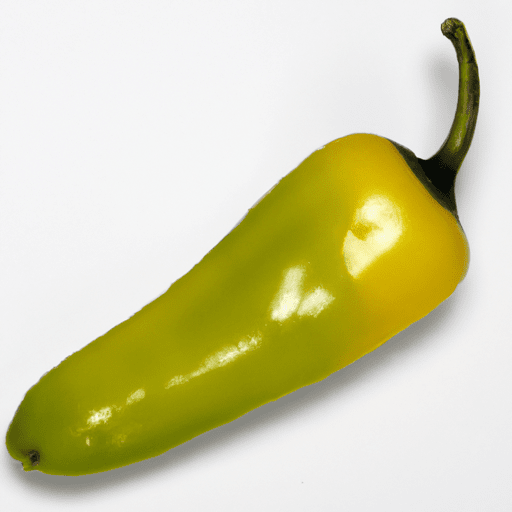Exploring the Versatile and Flavorful Banana Peppers
Banana peppers, also known as yellow wax peppers, are a vibrant and versatile ingredient that adds a burst of flavor to many dishes. With their mild heat and tangy sweetness, banana peppers are a popular choice among pepper enthusiasts and home cooks alike. In this blog post, we’ll delve into the world of banana peppers, exploring their taste, common uses in cooking, nutritional value, and uncovering some interesting history and facts.
Taste Profile and Heat Level
Banana peppers are known for their mild heat and tangy, slightly sweet flavor. They offer a pleasant kick without overwhelming the taste buds, making them an excellent choice for those who prefer milder peppers. The heat intensity can vary from pepper to pepper, but it generally ranks low on the Scoville scale, which measures the spiciness of peppers. This makes banana peppers a fantastic option for those who enjoy a touch of heat without the fiery aftermath.
Versatile Culinary Uses
Banana peppers are incredibly versatile, lending themselves to a wide range of culinary creations. They can be enjoyed raw, grilled, roasted, pickled, or sautéed, allowing for endless possibilities in the kitchen.
Fresh and Refined
When used fresh, banana peppers bring a zesty crunch to salads, sandwiches, and wraps. Their tangy flavor and vibrant color beautifully complement a variety of fresh ingredients, adding a delightful twist to ordinary dishes.
Pickled Perfection
One of the most popular uses for banana peppers is pickling. The pickling process enhances their unique taste, creating a tangy, slightly sour flavor that pairs perfectly with charcuterie boards, appetizers, and sandwiches. Pickled banana peppers add a delightful zing to any dish they accompany, elevating the overall flavor profile to new heights.
Stuffed Sensations
Banana peppers, with their elongated shape and mild heat, provide an ideal vessel for stuffing. Whether filled with cheese, meat, or a combination of various ingredients, stuffed banana peppers offer a burst of flavor that leaves an impression. Baked or grilled, they transform into a mouthwatering appetizer or main course.
Nutritional Value
Aside from their enticing taste, banana peppers also offer numerous nutritional benefits. They are low in calories and a rich source of vitamins and minerals. Here’s a breakdown of their nutritional value:
- Vitamin C: Banana peppers are loaded with vitamin C, which helps support the immune system and promote healthy skin.
- Vitamin B6: They contain vitamin B6, essential for brain development and function.
- Fiber: Banana peppers are a good source of dietary fiber, aiding digestion and keeping you feeling fuller for longer.
- Capsaicin: Although milder than some peppers, banana peppers contain capsaicin, a compound known to have anti-inflammatory and pain-relieving properties.
Uncovering the History and Fun Facts
Banana peppers have a colorful history that adds intrigue to their already captivating profile. Here are some interesting tidbits about these pepper gems:
- Origin: Banana peppers are believed to have originated in Central and South America.
- Varieties: While they are typically bright yellow, banana peppers can sometimes be found in red or green varieties.
- Italian Inspiration: Banana peppers have become a staple in Italian cuisine, often used in dishes like sausage and pepper sandwiches or as a pizza topping.
- Conservation: If you have an abundant harvest of banana peppers, you can prolong their shelf life by pickling or freezing them.
- Mild Heat, Great Taste: Banana peppers are an excellent choice for those who want to add flavor to dishes without overwhelming spiciness.
There you have it! Banana peppers are an absolute delight—a versatile ingredient that brings excitement and flavor to countless recipes. Whether you enjoy them fresh, pickled, or stuffed, their tangy sweetness and mild heat are sure to tantalize your taste buds. So, don’t miss out on the opportunity to incorporate these fantastic peppers into your next culinary adventure!
Banana peppers
- Origin: Banana peppers, also known as yellow wax peppers, originated in South America. The exact region of their origin is not well-documented, but they are believed to have originated in Bolivia and Peru.
- Appearance and Taste: Banana peppers are usually long and slender, with a curved shape that resembles a banana. They have a shiny, smooth, and thin skin that is typically yellow in color when ripe. These peppers are mild in flavor with a slightly sweet taste, making them a popular choice for those who prefer less spicy heat.
- Common Uses: Banana peppers are versatile and can be used in various culinary dishes. They are often used in salads, sandwiches, pizzas, pickles, and as a topping for nachos and hot dogs. They can also be stuffed with cheese or other fillings and then grilled or baked. In some cuisines, banana peppers are used to add flavor to sauces, soups, and stir-fries.
- Nutritional Benefits: Banana peppers are low in calories and are a good source of vitamins and minerals. They are particularly rich in vitamin C, which is important for immune function, and contain significant amounts of vitamin A and potassium. They also provide small amounts of fiber and are low in fat.
- Unique Properties: Banana peppers have a moderate heat level, ranging from 0-500 Scoville Heat Units (SHU). This makes them milder than jalapenos but slightly hotter than bell peppers. Their bright yellow color, when fully ripe, makes them visually appealing and adds a vibrant touch to dishes. Due to their mild heat, banana peppers are often used as a substitute for spicier peppers in recipes.
- Historical Significance: While there is no significant historical event associated with banana peppers specifically, peppers have a long history of cultivation and consumption. Peppers, including banana peppers, were brought to Europe by Christopher Columbus after his voyages to the Americas. Since then, they have become a staple ingredient in many cuisines around the world.




Use the share button below if you liked it.
It makes me smile, when I see it.